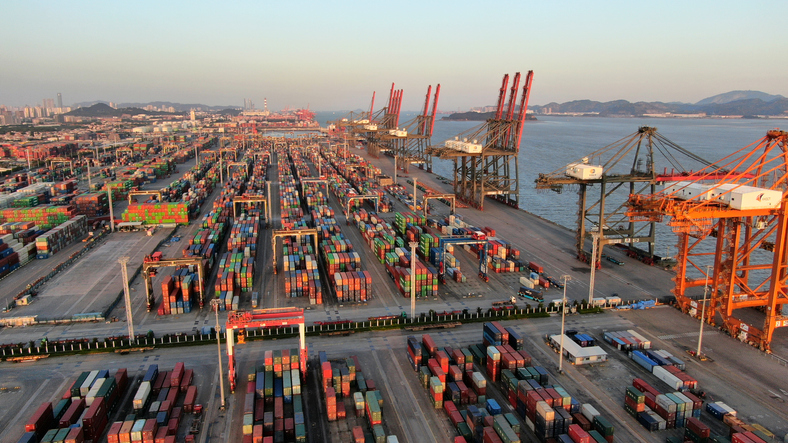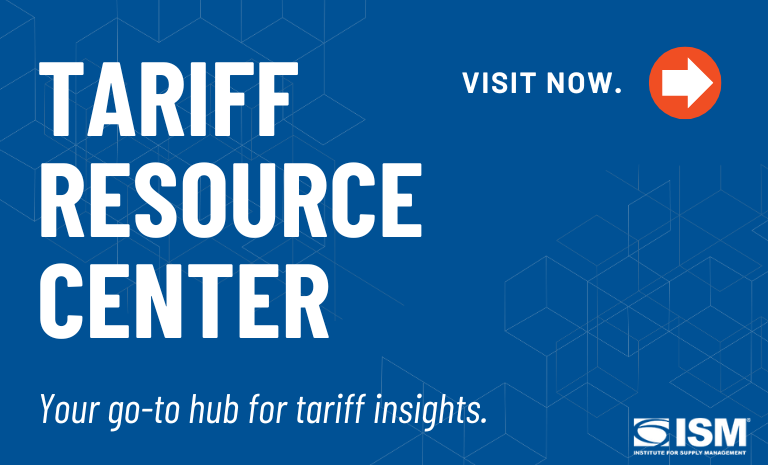U.S.-China Trade Deal: Supply Chain Implications

Supply management organizations and professionals — as well as consumers — can sigh in relief, at least for now: The U.S. and China have agreed to slash tariffs.
“In reaching an agreement, the United States and China will each lower tariffs by 115 percent, while retaining an additional 10 percent tariff. Other U.S. measures will remain in place,” the White House said in a statement.
Despite the reprieve, organizations should continue taking proactive measures to reduce risk and disruption to their supply chains.
“Right now, small businesses around the world are struggling to stay afloat,” says Juan Pellerano-Rendon, chief marketing officer at Swap, a global e-commerce operating system that manages operations for direct-to-consumer brands. “While this doesn’t offer total reprieve from economic uncertainty, it gives businesses more time to develop a strategy to optimize their supply chains in this new trade environment.”
The Details
The U.S. and China agreed that:
- The duties on Chinese imports that were imposed on April 8-9, which had brought the total percentage to 145 percent, are suspended.
- The 34 percent reciprocal tariff on Chinese goods imposed on April 2 has been paused for 90 days.
- The U.S. will retain the duties imposed on China before April 2, “including Section 301 tariffs, Section 232 tariffs, tariffs imposed in response to the fentanyl national emergency invoked pursuant to the International Emergency Economic Powers Act, and Most Favored Nation tariffs,” the statement says.
- During the pause, there will be a 10-percent tariff on Chinese goods.
“The 10-percent tariff continues to set a fair baseline that encourages domestic production, strengthens our supply chains and ensures that American trade policy supports American workers first, instead of undercutting them,” the White House statement said.
- China also will retain a 10-percent tariff on U.S. imports during the pause, but will suspend its 34-percent retaliatory tariff, imposed April 4, for 90 days.
- China “will also suspend or remove the non-tariff countermeasures taken against the United States since April 2,” according to the statement. An example: restrictions on rare earth metals exports.
- All measures take effect May 14.
The agreement sets “a path for future discussions to open market access for American exports,” the White House said. Both the U.S. and China “affirmed the importance of the critical bilateral economic and trade relationship between both countries and the global economy,” it stated.
Pellerano-Rendon reiterates, “This means the two countries are open and willing to put aside their differences to revitalize global trade networks.”
Supply Chain Outlook
The latest agreement follows a trade deal with Great Britain. Still, trade volatility remains, and companies should focus on ways to reduce risk, such as moving their operations out of China and into countries like Vietnam, Pellerano-Rendon says.
“The pause is not a long-term solution, and the strained trade relations between China and the U.S. will continue to have looming effects for years to come,” he says. “For most small businesses, reshoring their operations isn’t feasible to maximize their bottom lines. Nearshoring is a more practical solution, especially for companies operating in Asia.”
Even more likely: Companies will try to stock up on inventory, Pellerano-Rendon says. This will prolong the benefits of the pause, he adds.
“Imports are going to jump again following the rollback of tariffs,” Comerica Bank economists Bill Adams and Waran Bhahirethan wrote in a note to investors and clients. “Many American businesses slow-rolled import plans when the tariff on imports from China was hiked to 145 percent, in anticipation of a rollback. Now they will catch up on delayed purchases and build precautionary inventories in case tariffs go back up.”
The bank also noted that higher imports will impact the second quarter gross domestic product (GDP) report “as a big headwind from the trade deficit, the same headwind that pushed first quarter real GDP into a contraction. It would be no surprise to see real GDP contract for a second consecutive quarter.”
Nevertheless, given the tariff cuts, the risk of a recession in the next year “looks substantially lower,” the Comerica note states.
Consumer Response
The lowering of tariffs, even those affected by the 90-day pause, could result in a short-term price drop for apparel, luxury and other goods imported from China, Pellerano-Rendon says.
“In that event, we may see an uptick in consumer confidence,” he says. “However, with so much uncertainty, consumers may still be wary of making big purchases on non-essential items despite potential price drops.”
In its statement, Comerica Bank notes that the tariff cuts “to a more manageable level should make people feel more comfortable about the economic outlook, support discretionary spending by businesses and consumers, and likely keep the economy growing in 2025.”

